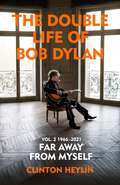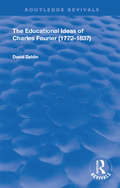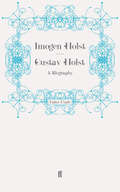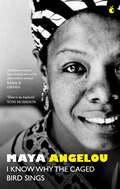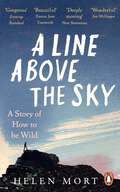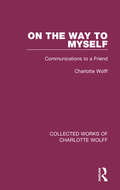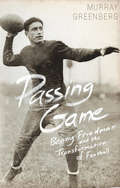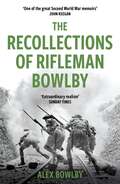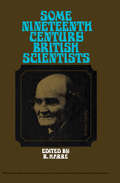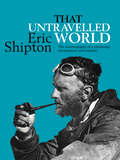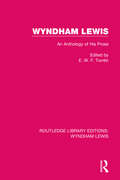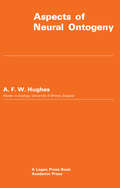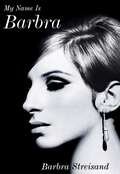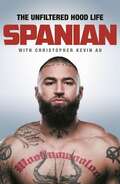- Table View
- List View
The Double Life of Bob Dylan Volume 2: ‘Far away from Myself’
by Clinton HeylinThe second volume of Clinton Heylin's magisterial biography takes us from Dylan's 1966 motorcycle accident to the present day. We meet a man who is determined to confound expectations; yet whatever he does only seems to confirm his iconic status to fans and critics alike.There are peaks and troughs. Long periods of writer's block are followed by sudden bursts of creativity that produce some of the best work of his career, including perhaps his most celebrated album, 1975's Blood On The Tracks. There is the unpredictable recording process, with Dylan often including on his albums the worst takes and leaving off the best songs altogether. On the Neverending Tour he reinvents his songbook on a nightly basis, at times without recognition. Then there are the albums and songs that reveal the genius of an artist whose lyrics draw on centuries of American culture but who refuses to be shackled to his own past.Today his voice is almost unrecognisable from his 1960s peak, and the man whose songs had been devoted to dissecting his romantic relationships has become focused on mortality, solitude and getting old. Yet his albums continue to top the charts, 2020's Rough And Rowdy Ways being his fourth No. 1 album of the twenty-first century.There is no other living artist whose creative output has remained constantly intriguing, often baffling, sometimes infuriating but always fascinating for over sixty years. Clinton Heylin's definitive, scrupulously researched and revelatory life, based on unprecedented access to the official Tulsa archive and other new sources, paints the fullest and brightest portrait yet of an iconic figure that has defined contemporary culture.
The Educational Ideas of Charles Fourier: 1772-1837 (Routledge Revivals)
by David ZeldinOriginally published in 1969, this book aims to show that Charles Fourier has much to say that is of interest to modern edcationlists. Fourier hardly ever figures in histories of education because only recent developments in educational practice have shown his ideas to be of topical and practical importance to the schoolteacher and the planner of today. Fourier devised a system of education to suit a self-infulgent, democratic society, in which children's energies could be used in ways which were both socially useful and personally rewarding. He was a pioneer advocate of comprehensive education, so as to establish harmy between classes. He urged vocational training and guidance, so as to establish harmony between men and their work. He devised close links between education and industry, to bring pleasure into both school and work and to integrate the two. He was one of the first to plan social service to the community by children. This prophetic though eccentric writer, sometimes extravagant, often amusing, but always endearing, who has already exerted much influence on socialist theory, deserves to be better known by students of education.
The Educational Ideas of Charles Fourier: 1772-1837 (Routledge Revivals)
by David ZeldinOriginally published in 1969, this book aims to show that Charles Fourier has much to say that is of interest to modern edcationlists. Fourier hardly ever figures in histories of education because only recent developments in educational practice have shown his ideas to be of topical and practical importance to the schoolteacher and the planner of today. Fourier devised a system of education to suit a self-infulgent, democratic society, in which children's energies could be used in ways which were both socially useful and personally rewarding. He was a pioneer advocate of comprehensive education, so as to establish harmy between classes. He urged vocational training and guidance, so as to establish harmony between men and their work. He devised close links between education and industry, to bring pleasure into both school and work and to integrate the two. He was one of the first to plan social service to the community by children. This prophetic though eccentric writer, sometimes extravagant, often amusing, but always endearing, who has already exerted much influence on socialist theory, deserves to be better known by students of education.
Gustav Holst: A Biography
by Imogen HolstGustav Holst was a leading figure in the new age of English music in the late 19th and early 20th centuries. His most celebrated work, The Planets, is an orchestral tour de force, but he wrote music of startling originality in many forms, drawing inspiration from sources as varied as English folksong, oriental melody, the Apocrypha and Sanskrit literature, as well as from writers such as Keats, Hardy, Bridges and Whitman.This biography, by his daughter Imogen, was first published by Faber in 1938 and revised in 1969. In it she quotes at length from his many letters to his friends - especially to his closest colleague Vaughan Williams - and draws on her personal memories of Holst's later years.Holst struggled all his life against bouts of ill-health and depression, but his remarkable and good-humoured resilience enabled him to compose great music in often difficult circumstances. He was essentially a very private person, and the huge popular success of The Planets in 1919 disconcerted him. Imogen Holst describes the effect of this sudden fame on her father, and records the late flowering of his music in the final years of his life.
I Know Why The Caged Bird Sings (Virago Modern Classics)
by Dr Maya AngelouNow the basis of a major Radio 4 drama, Maya Angelou's debut memoir paints a portrait of 'a brilliant writer, a fierce friend and a truly phenomenal woman' (Barack Obama)Maya Angelou's debut memoir has become an classic beloved worldwide. Her six volumes of autobiography are a testament to the her talents and resilience.. Loving the world, she also knows its cruelty. As a Black woman she has known discrimination and extreme poverty, but also hope, joy, achievement and celebration. In this first volume of her six books of autobiography, Maya Angelou beautifully evokes her childhood with her grandmother in the American south of the 1930s. She learns the power of the white folks at the other end of town and suffers the terrible trauma of rape by her mother's lover. However, far from being dispiriting, James Baldwin writes, 'I Know Why the Caged Bird Sings liberates the reader into life simply because Maya Angelou confronts her own life with such a moving wonder, such a luminous dignity.''I write about being a Black American woman, however, I am always talking about what it's like to be a human being. This is how we are, what makes us laugh, and this is how we fall and how we somehow, amazingly, stand up again' Maya Angelou
Late Seventeenth Century Scientists: A Volume in The Commonwealth and International Library: Liberal Studies Division
by Donald HutchingsLate Seventeenth Century Scientists provides information on the lives and scientific works of scientists who were active in the latter half of the 17th century. This book discusses the outstanding achievements of physical science in the 17th century. Organized into six chapters, this book begins with an overview of the Robert Boyle's greatest contribution to scientific understanding when he pioneered physical methods and insisted that a substance should be regarded as an element until it can be further resolved into simpler substances. This text then examines the scientific works of Marcello Malpighi wherein he concludes in his treatise on the liver that bile is secreted in the gall-bladder itself and not in the liver. Other chapters consider the contributions of various scientists, including Christopher Wren, Christiaan Huygens, and Robert Hooke. The final chapter deals with Isaac Newton's ideas of mass and force. This book is a valuable resource for teachers, students, and researchers.
A Line Above the Sky: On Mountains and Motherhood
by Helen MortGuardian Books to Watch 2022Evening Standard Books to Watch 2022Bookseller Editor's Choice'A wonderful book - exhilarating and taut, fearless in its explorations of wildness, risk, motherhood, and the inner and outer worlds of the writer' Jon McGregor'This book is beautiful' Emma Jane UnsworthClimbing gives you the illusion of being in control, just for a while, the tantalising sense of being able to stay one move ahead of death. Helen Mort has always been drawn to the thrill and risk of climbing: the tension between human and rockface, and the climber's powerful connection to the elemental world. But when she becomes a mother for the first time, she finds herself re-examining her relationship with both the natural world and herself, as well as the way the world views women who aren't afraid to take risks. A Line Above the Sky melds memoir and nature writing to ask why humans are drawn to danger, and how we can find freedom in pushing our limits. It is a visceral love letter to losing oneself in physicality, whether climbing a mountain or bringing a child into the world, and an unforgettable celebration of womanhood in all its forms.
On the Way to Myself: Communications to a Friend (Collected Works of Charlotte Wolff)
by Charlotte WolffOriginally published in 1969, Dr Charlotte Wolff was the author of three books of psychology: The Human Hand, A Psychology of Gesture and The Hand in Psychological Diagnosis. This book, though it contains much psychology, is not of the same scientific kind as these. It is an autobiography, but not one of the normal kind. It is the history of a mind, not the chronicle of a life. For this reason it is not arranged chronologically but it is constructed round what the author called the creative shock experiences of her life, some of which belong with their consequences rather than with events adjacent in time. The resulting book is one of imaginative psychology. In the course of a life which began on the borders of Poland and carried her to Germany, France, Russia and England, Dr Wolff had met and known many of the most famous writers, artists and thinkers of the time. In Germany she studied under the founding Existentialists, Husserl and Heidegger; in France she carried out psychological research under Professor Henri Wallon and was also assisted by the Surrealists, André Breton, St. Exupéry, Paul Eluard; in England she was aided in her work by Sir Julian Huxley, Aldous Huxley and his wife, Dr William Stephenson, Dr Earle and others. But Dr Wolff’s earliest creative work was as a poet, and though she turned to psychology, her interest in art brought her into touch at different times with Ravel, Virginia Woolf, Bernard Shaw, Lady Ottoline Morrell, Thomas and Heinrich Mann, Baladine Klossowska and many more. Dr Earle wrote of her that she is ‘an artist of psychology’, and it is thus that she appears in this odd and fascinating book. Today it is an interesting glimpse in to the life of an early feminist psychologist. Her later research focused on sexology, her writing on lesbianism and bisexuality were influential early works in the field.
On the Way to Myself: Communications to a Friend (Collected Works of Charlotte Wolff)
by Charlotte WolffOriginally published in 1969, Dr Charlotte Wolff was the author of three books of psychology: The Human Hand, A Psychology of Gesture and The Hand in Psychological Diagnosis. This book, though it contains much psychology, is not of the same scientific kind as these. It is an autobiography, but not one of the normal kind. It is the history of a mind, not the chronicle of a life. For this reason it is not arranged chronologically but it is constructed round what the author called the creative shock experiences of her life, some of which belong with their consequences rather than with events adjacent in time. The resulting book is one of imaginative psychology. In the course of a life which began on the borders of Poland and carried her to Germany, France, Russia and England, Dr Wolff had met and known many of the most famous writers, artists and thinkers of the time. In Germany she studied under the founding Existentialists, Husserl and Heidegger; in France she carried out psychological research under Professor Henri Wallon and was also assisted by the Surrealists, André Breton, St. Exupéry, Paul Eluard; in England she was aided in her work by Sir Julian Huxley, Aldous Huxley and his wife, Dr William Stephenson, Dr Earle and others. But Dr Wolff’s earliest creative work was as a poet, and though she turned to psychology, her interest in art brought her into touch at different times with Ravel, Virginia Woolf, Bernard Shaw, Lady Ottoline Morrell, Thomas and Heinrich Mann, Baladine Klossowska and many more. Dr Earle wrote of her that she is ‘an artist of psychology’, and it is thus that she appears in this odd and fascinating book. Today it is an interesting glimpse in to the life of an early feminist psychologist. Her later research focused on sexology, her writing on lesbianism and bisexuality were influential early works in the field.
Passing Game: Benny Friedman and the Transformation of Football
by Murray GreenbergBenny Friedman, the son of working class immigrants in Cleveland's Jewish ghetto, arrived at the University of Michigan and transformed the game of football forever. At the time, in the 1920s, football was a dull, grinding running game, and the forward pass was a desperation measure. Benny would change all of that. In Ann Arbor, the rookie quarterback's passing abilities so eclipsed those of other players that legendary coach Fielding Yost came back from retirement to coach him. The other college teams had no answer for Friedman's passing attack. He then went pro -- an unpopular decision at a time when the NFL was the poor stepchild to college football -- and was equally sensational, eventually signing with the New York Giants for an unprecedented 10,000, bringing fans and attention to the fledgling NFL.Passing Game rediscovers this little-known sports hero and tells the story of Friedman's evolution from upstart to American celebrity, in a vivid narrative that will delight and enlighten football fans of all ages.
The Recollections Of Rifleman Bowlby (W&N Military)
by Alex Bowlby'One of the great Second World War memoirs ... will be read as long as that war is remembered' John Keegan'Extraordinary realism' SUNDAY TIMES'A touch of the Somme and more than a hint of Wilfred Owen' TLSA classic of WWII, this is the vivid memoir of Private Bowlby, who came through the North Africa campaign only to have to battle in bitter fighting against a stubborn and skilled German defence in Italy. It is a truly authentic account of what it was like to fight your way through one of the most gruelling and dangerous campaigns of the Second World War, where so often the hunters became the hunted.A superb first-hand account of the the second world war.
The Sisters d' Aranyi (Routledge Revivals)
by Joseph MacleodFirst published in 1969, The Sisters d' Aranyi traces the careers, personalities and musical development of Jelly d’ Aranyi and Adila Fachiri, outstanding violinists in Britain and Hungarian great nieces of Josef Joachim, with insight and a wealth of anecdote and description. The book contains fresh lights on figures such as Joachim himself, Elgar, Ravel and Vaughan Williams, Casals, Suggia, and Myra Hess, Aldous Huxley, Einstein and Schweitzer, Balfour, Asquith and Neville Chamberlain. There are illuminating comments on music from Bach to the present day, and also a chapter on the mysterious affair of the Imprisoned Schumann Violin Concerto, and how it was found and liberated. These two consummate musicians were, however, part of a movement towards greater sincerity in music- a tendency not yet sufficiently recorded by musicologists. To set them in their time, this biography contains a most readable history of music in Britain with some original observations on the nature of music itself in performance. This book is an essential read for students of music, music history, literature, performance studies, for violin players and also for general music lovers.
The Sisters d' Aranyi (Routledge Revivals)
by Joseph MacleodFirst published in 1969, The Sisters d' Aranyi traces the careers, personalities and musical development of Jelly d’ Aranyi and Adila Fachiri, outstanding violinists in Britain and Hungarian great nieces of Josef Joachim, with insight and a wealth of anecdote and description. The book contains fresh lights on figures such as Joachim himself, Elgar, Ravel and Vaughan Williams, Casals, Suggia, and Myra Hess, Aldous Huxley, Einstein and Schweitzer, Balfour, Asquith and Neville Chamberlain. There are illuminating comments on music from Bach to the present day, and also a chapter on the mysterious affair of the Imprisoned Schumann Violin Concerto, and how it was found and liberated. These two consummate musicians were, however, part of a movement towards greater sincerity in music- a tendency not yet sufficiently recorded by musicologists. To set them in their time, this biography contains a most readable history of music in Britain with some original observations on the nature of music itself in performance. This book is an essential read for students of music, music history, literature, performance studies, for violin players and also for general music lovers.
Some Nineteenth Century British Scientists: The Commonwealth and International Library: Science and Society
by R. HarréSome Nineteenth Century British Scientists presents the biographies of eight British scientists who represent the state of science in the second half of the Victorian era: Charles Wyville Thomson, James Murray, Arthur Cayley, Francis Galton, William Thomson, Lord Kelvin, Norman Lockyer, Sidney Gilchrist Thomas, and William Ramsay. This book is comprised of seven chapters and begins by focusing on the contributions and achievements of Charles Wyville Thomson in the fields of natural history, marine biology, and deep-sea exploration, especially his expedition aboard H.M.S. Challenger, and of James Murray in oceanography. Subsequent chapters discuss the works of Arthur Cayley (mathematics), Francis Galton (exploration, anthropology, and eugenics), and William Thomson, Lord Kelvin (mathematical physics). The achievements of Norman Lockyer (astrophysics), Sidney Gilchrist Thomas (inventor of the Thomas-Gilchrist process for eliminating phosphorus in the Bessemer converter), and William Ramsay (chemistry) are also considered. This monograph will be a useful resource for students and scientists alike.
That Untravelled World: The autobiography of a pioneering mountaineer and explorer (Eric Shipton: The Mountain Travel Books)
by Eric Shipton‘It is often from our setbacks, even our weaknesses, that we derive some of our greatest blessings.’That Untravelled World is the autobiography of one of the greatest adventurers of the twentieth century. Eric Shipton was a pioneering explorer, journeying to places that did not feature on maps and to unexplored mountains, such as the High Dauphiné.Shipton describes early childhood days filled with adventures; his first encounter with the high mountains on a visit to the Pyrenees, and the onset of his climbing career inspired by travels in Norway with a friend. He reminisces on first meeting infamous explorer H.W. ‘Bill’ Tilman, and their first expedition together to Mount Kenya. Tilman and Shipton were later to become one of the most famous climbing partnerships of all time.Filled with anecdotes from different periods of his life, Shipton takes us on his journey from Kilimanjaro and Mount Stanley alongside Tilman, his discovery of the route to the Nanda Devi Sanctuary, summiting Mount Kamet with mountaineering icon Frank Smythe, and multiple expeditions to Everest.First published in 1969, That Untravelled World is the story of an adventurer who, inspired by Edward Whymper, travelled to feral landscapes across the globe, and has in turn inspired generations of climbers and mountaineers.
Wyndham Lewis: An Anthology of His Prose (Routledge Library Editions: Wyndham Lewis #3)
by E. W. F. TomlinOriginally published in 1969, this project had Wyndham Lewis’ personal approval and is a comprehensive anthology of his prose writings, especially those which are difficult to access. There are extracts from some of Wyndham Lewis’ remarkable books such as Paleface, The Art of Being Ruled and Men Without Art. Lesser known works such as Filibusters in Barbary, The Diabolical Principle and The Dithyrambic Spectator, Blasting and Bombardiering, and Rude Assignment, are freely drawn upon and there is a section devoted to writings on the USA, a country which Lewis knew well.
Wyndham Lewis: An Anthology of His Prose (Routledge Library Editions: Wyndham Lewis #3)
by E. W. F. TomlinOriginally published in 1969, this project had Wyndham Lewis’ personal approval and is a comprehensive anthology of his prose writings, especially those which are difficult to access. There are extracts from some of Wyndham Lewis’ remarkable books such as Paleface, The Art of Being Ruled and Men Without Art. Lesser known works such as Filibusters in Barbary, The Diabolical Principle and The Dithyrambic Spectator, Blasting and Bombardiering, and Rude Assignment, are freely drawn upon and there is a section devoted to writings on the USA, a country which Lewis knew well.
Aspects of Neural Ontogeny
by A. F. HughesAspects of Neural Ontogeny focuses on the interaction between the nervous system and peripheral organs during development, including history and development of neurons and the functions of nerves and muscles. The book first offers information on the development of neurons, including formation and growth of nerve fibers; growth cone and the extension of nerve fibers; history of the neuron theory; and path of nerve fibers. The manuscript then elaborates on the innervation of the tetrapod limb and the center and periphery. Discussions focus on the relationships between the ventral horn and muscles of the limb; experimental studies on limb plexus and limb nerves; and relationships between spinal nerves and limb muscles. The publication takes a look at the ontogeny of behavior, as well as pattern of motility, spontaneous movements, tetrapod limb, and experimental studies. The book is a dependable reference for readers interested in neural ontogeny.
George Crabbe and his Times 1754-1832: A Critical and Biographical Study (Routledge Revivals)
by René HuchonThis book was first published in 1968 First appearing in 1907, René Huchon with the help of original manuscripts rewrote the biography of Crabbe published by his son in 1834. As the title suggests, however, Huchon was not merely concerned with the presentation of Crabbe as a literary figure in isolation, and by conjuring up the atmosphere and background of the eighteenth century he is able to shed new light on Crabbe's poetry.There are descriptions of Aldborough, of the desolate heaths and marshy wastes where Crabbe spent his unhappy youth, which together with his background of poverty, and familiarity with the life of the country poor, led him to revolt against the current trend of pastoral poetry. At the time the most detailed study of Crabbe, this work is of foremost importance, for rarely is a poety placed so securely in his setting, and both followers of the poet, and devotees of the eighteenth century will welcome this being freely available agian.
George Crabbe and his Times 1754-1832: A Critical and Biographical Study (Routledge Revivals)
by René HuchonThis book was first published in 1968 First appearing in 1907, René Huchon with the help of original manuscripts rewrote the biography of Crabbe published by his son in 1834. As the title suggests, however, Huchon was not merely concerned with the presentation of Crabbe as a literary figure in isolation, and by conjuring up the atmosphere and background of the eighteenth century he is able to shed new light on Crabbe's poetry.There are descriptions of Aldborough, of the desolate heaths and marshy wastes where Crabbe spent his unhappy youth, which together with his background of poverty, and familiarity with the life of the country poor, led him to revolt against the current trend of pastoral poetry. At the time the most detailed study of Crabbe, this work is of foremost importance, for rarely is a poety placed so securely in his setting, and both followers of the poet, and devotees of the eighteenth century will welcome this being freely available agian.
My Name is Barbra: The exhilarating and startlingly honest autobiography of the living legend
by Barbra StreisandThe long-awaited memoir by the superstar of stage, screen, recordings, and television'Exhilarating … leaves blood on the page … My Name Is Barbra is 992 pages of startling honesty and self-reflection, deadpan parenthetical asides (including a running bit about how much she loves going to the dentist), encyclopedic recall of onstage outfits, and rigorous analyses of her films’ Vanity FairBarbra Streisand is by any account a living legend, a woman who in a career spanning six decades has excelled in every area of entertainment. She is among the handful of EGOT winners (Emmy, Grammy, Oscar, and Tony) and has one of the greatest and most recognizable voices in popular music. She has been nominated for a Grammy 46 times, and with Yentl she became the first woman to write, produce, direct, and star in a major motion picture. In My Name Is Barbra, she tells her own story about her life and extraordinary career, from growing up in Brooklyn to her first star-making appearances in New York nightclubs to her breakout performance in Funny Girl (musical and film) to the long string of successes in every medium in the years that followed. The book is, like Barbra herself, frank, funny, opinionated, and charming. She recounts her early struggles to become an actress, eventually turning to singing to earn a living; the recording of some of her acclaimed albums; the years of effort involved in making Yentl; her direction of The Prince of Tides; her friendships with figures ranging from Marlon Brando to Madeleine Albright; her political advocacy; and the fulfillment she's found in her marriage to James Brolin.No entertainer's memoir has been more anticipated than Barbra Streisand's, and this engrossing and delightful book will be eagerly welcomed by her millions of fans.
The Past Is Myself
by Christabel BielenbergOn 29 September 1934, at the German Embassy office in London, Christabel Bielenberg officially became a German citizen. Having met her German husband Peter two years prior, Christabel decided to renounce her British citizenship, planning to start married life with Peter in Berlin. Though Adolf Hitler had risen to power in 1933, Christabel and Peter were convinced the German people would see through the newly elected chancellor.But soon Christabel found herself living under the horrors of Nazi rule and Allied bombings as the war progressed. Closely associated with resistance circles, her husband was arrested after the failure of the plot against Hitler’s life on 20 July 1944, and she herself was interrogated by the Gestapo. Though she lived in constant fear for her and her family’s safety, Christabel survived the war with the help of other like-minded Germans who were against Hitler and the Third Reich.With various memorable encounters – from a simple-minded Nazi official who was also her odd-job gardener to the good-hearted Black Forest villagers who sheltered her till the liberation – Christabel shares not only the hardships and worry but also the humour and humanity she found during these dark days. The human dimension of her writing brings about an unforgettable portrait of an evil time.
Spanian: The Unfiltered Hood Life
by SpanianBy the time he was twelve, Spanian knew he would follow his family's footsteps to become a career criminal. What followed was a decade-long string of brazen crimes and brutal violence: stabbings, ram-raids, drug runs and a notorious high school siege. Throughout the Sydney social housing enclaves of Redfern, Waterloo and Woolloomooloo, Spanian earned a reputation as one of the city's most flagrant crooks; armed with a boxcutter in one hand, and a syringe in the other.But it all came at a damning price: in the throes of heroin addiction and thirteen years wasted behind bars, Spanian became a longstanding resident of jails across New South Wales. There, he was embroiled in racial divisions, prison politics, and a vicious vortex of self-destruction, until music and books became an unlikely lifeline. Reading and rapping became new rituals, and a glistening light at the end of the tunnel. Released from Bathurst Correctional Centre in 2017 with newfound purpose, Spanian has since found viral fame and a sprawling, worldwide audience through hip-hop and his magnetic social media presence.This is the powerful, unflinching and high-octane memoir of how a young inner-city kid became Spanian. It gives unapologetic insight into the gritty socio-economic underbelly of Sydney city, the criminal justice system, and the correctional system. The story of Spanian provides hope that even the most stubborn cycles can be broken, and new dreams made.
A Taste of Power (Penguin Modern Classics)
by Elaine BrownThe incredible memoir of Elaine Brown - the first woman leader of the Black Panthers'Here I was, a woman, proclaiming supreme power over the most militant organization in America'In 1974 Elaine Brown became the first woman leader of the Black Panther Party. This is her unforgettable memoir, charting her rise from an impoverished neighbourhood in Philadelphia, through her political awakening during a bohemian adolescence, and on to her time as a foot soldier for the Panthers and ascent into its male-dominated upper ranks. It is a seminal exploration of power, racism and one woman's revolutionary struggle.'Heart-wrenching, wild and moving ... a glowing achievement' Los Angeles Times'What Elaine Brown writes is so astonishing, at times it is even difficult to believe she survived it. And yet she did, bringing us that amazing light of the black woman's magical resilience' Alice Walker
A Tenderfoot in Colorado (Timberline Books)
by Richard Baxter TownshendNow back in print, A Tenderfoot in Colorado is R. B. Townshend's classic account of his time in the wild frontier territory known as Colorado. Townshend arrived in the Rockies in 1869, fresh from Cambridge, England, with $300 in his pockets. He found friends among some of Colorado's more colorful characters, people who taught him much about life on the frontier. Jake Chisolm taught him how to shoot after rescuing him from two men preparing to skin him at poker. Wild Bill of Colorado taught him the meaning of "the drop" and warned him against wearing a gun in town unless he wanted trouble. Capturing the Western vernacular more accurately than any other writer, Townshend includes vivid details of life in the West, where he killed a buffalo, prospected for gold, and was present for the official government conference with the Ute Indians after gold was discovered on their lands.
